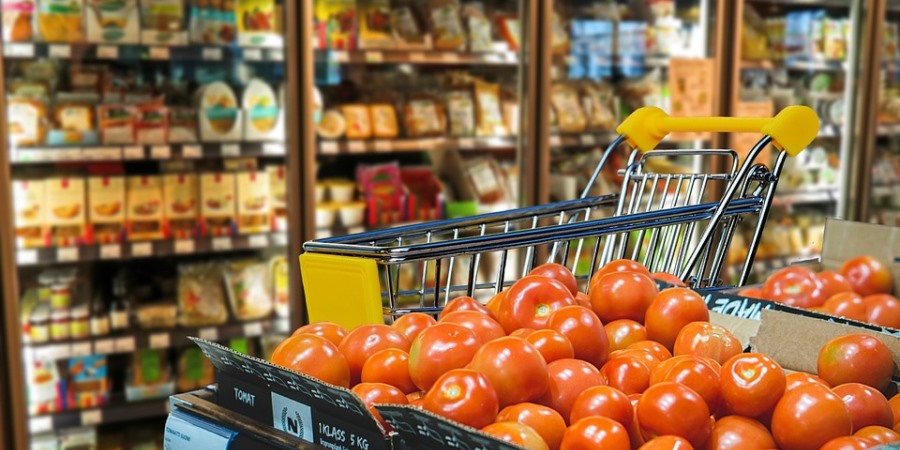The UK food and grocery industry is forecast to grow by £24.1bn, or 12.5%, by 2024, bringing the market to a total value of £217.7bn, according to the latest forecasts from research organisation IGD.
Highlights from the data include:
- Online and discount will contribute almost two-thirds of cash growth and will boost their combined market share from 18.6% to 23.4% over the next five years
- Discounters alone will contribute £4 in every £10 of growth over the next five years – £9.7bn out of £24.1bn
- Large stores – supermarkets and hypermarkets – will account for half of the market (50.1%) in 2024
- On average, people are conducting 24 shopping trips per month and spending 18.3 hours a month planning, travelling, shopping for and unpacking their food and grocery shopping.
Online will be the fastest growing channel, but now only just ahead of discount:
- +43.8%, +£5.1bn
- On average, when conducting a main food shop online, shoppers spend 22 minutes planning, 31 minutes shopping and 13 minutes unpacking
- The average shopper conducts one online shop a month
Simon Wainwright, Director of Insight at IGD, said: “Growth in the online channel will come from a number of directions. Firstly, newer players are entering the space such as Amazon and meal box operators such as Hello Fresh, Gousto and Mindful Chef. Faster and more convenient options to shop for groceries online are being introduced, such as Sainsbury’s, Ocado and Amazon all offering orders within an hour and widening the availability of delivery. More sophisticated analytics are also helping to strengthen customer loyalty.
“From a shopper perspective, the key benefits of shopping more online in future are good value, time saving and ease of shop. Our research tells us that online is preferred the most for the main food shop, with online shoppers saving 23 minutes on average shopping online for their main shop than if they were to do this in a large store.”
The biggest cash contribution to market growth will be from discounters (food and variety discounters):
- +40.2%, +£9.8bn
- On average, when conducting a main food shop at a food discounter, shoppers spend 15 minutes planning, 25 minutes travelling, 34 minutes shopping and 12 minutes unpacking
- The average shopper conducts 3 shopping trips at food discounters a month
Commenting on discounter growth, Wainwright, said: “Food and variety discounters continue to grow their market share rapidly, fuelled by ambitious store-opening programmes. With many food discount shoppers now perceiving Aldi and Lidl as supermarkets rather than discounters, and more targeted investments in categories such as fresh produce, meat, bakery and beauty, the channel will continue to experience notable growth.
“Developments include the expansion of Aldi, which is on track to open 1,200 stores by 2025, and Lidl upping store openings to 50-60 per year. The entry of Jack’s in the channel will also support growth, but this will only be as a marginal player with nine stores at present. According to shoppers, the benefits to shopping more with food discounters in future are good value, time saving and concise range. Over a fifth (21%) of shoppers say they currently use food discounters for the majority of their shopping (2019), and 26% say this will be the case in 2021-2022.”
Younger shoppers will be key to unlocking growth for the convenience channel:
- +16.6%, £6.9bn
- On average, shoppers spend 8 minutes shopping at a convenience store
- The average shopper conducts 7 shopping trips at convenience stores in a month
Simon Wainwright said: “Despite only marginal growth in market share, the convenience channel will deliver the second biggest gain in sales as retailers update their stores to meet the demand for smaller and more frequent shopping trips. Younger shoppers are more predisposed to shopping at convenience stores than older shoppers. Having grown up in the era of ‘new convenience’, offering wider ranges, longer opening hours and supermarket quality, younger generations will be key to driving ongoing growth, but they do have high expectations.
“Convenience formats and ranges are increasingly being tailored to local demographics to engage shoppers more effectively. Creating an easy shopping experience is an increasing focus for convenience retailers, with Co-op and Sainsbury’s trialling payment by app technology.”
While large – supermarket and hypermarket – store openings are slowing, there’s significant investment in upgrading existing stores, making them relevant for changing shopper needs:
- Supermarkets +3.1% (+£2.8bn), hypermarkets -0.8% (£-0.1bn)
- On average, when conducting a main food shop at large stores, shoppers spend 12 minutes planning, 28 minutes travelling, 38 minutes shopping and 11 minutes unpacking
- The average shopper conducts 10 shopping trips at large stores in a month
“Large stores remain a core part of the multichannel approach shoppers continue to take,” comments Simon Wainwright, “with the average shopper still visiting larger stores 10 times a month, which is three times as many as food discount stores.
“Over the next five years we’ll see these retailers investing more in how they can improve the shopper experience at existing stores over introducing new sites, with key trends including easier in-store navigation for shoppers conducting smaller shops and introducing more foodservice and concessions. Developments are also taking place in product innovation, brand partnerships, local sourcing and offering new services, which is largely being driven by competition from the likes of Aldi and Lidl.
“To remain relevant to shoppers, large store retailers should focus on providing better value, more ways to save time and an easier shopping experience.”
For additional insight into the future of food and grocery, download IGD’s global trend predictions andresearch into future shopper behaviours and attitudes.









